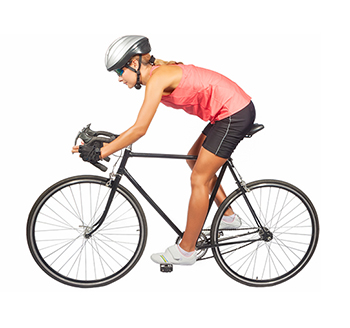27 Feb Cycling Performance Tips
 Have you been recently inspired by the Tour Down Under to get back on the bike or even sign up for racing event? Cycling is a great way to keep fit and a fantastic way to commute- as you can tell by the numbers on the Gardiners Creek Trail.
Have you been recently inspired by the Tour Down Under to get back on the bike or even sign up for racing event? Cycling is a great way to keep fit and a fantastic way to commute- as you can tell by the numbers on the Gardiners Creek Trail.
Often cyclists want to improve their performance on the bike. Some common goals we hear include; being able to ride longer, ride faster, tackle hills easier, be less injured. However, knowing an ideal training method can be challenging.
Training Tips:
–Don’t follow the ‘one-size-fits-all’ model and understand your own body and capabilities
This can often be a challenge while training/riding regularly as part of a large group. Group riding is enjoyable and a great way to help motivation, however don’t forget individualized sessions.
–Target one or two key sessions each week to focus on your goals/event demands
Simon Jones, Head of innovation at Team Sky, recommends training should focus on specific physical, technical and tactical event demands (2016). It is suggested keeping a relative constant weekly training volume, yet target one or two key sessions each week (whether it’s volume, intensity etc).
Research by Seiler (2010) showed endurance athletes achieve high level of performance splitting their training 80% low-intensity and 20% high intensity. His research promoted increases in training volume over intensity, which resulted in high performance.
It is important to note in this study there was varied response to training this way. A higher number of people did report improved performance which varied from 5% to 15%. Although a majority benefitted from this training- not everyone. A smaller percentage did show little improvement and some even showed a reduced performance.
–Monitor your training loads
These days thanks to plenty of good apps and monitoring devices- we can easily measure different variables such as distances, speed, heart-rate etc. A very simple but valid (Grappe, 2016) method of also measuring your training loads is using a Rating of Perceived Exertion (your self-rated intensity out of 10) x how long your session is.
Monitoring training loads will help guide your progressions, help with goal setting and monitor your improvements.
-Make sure you have your bike set-up correctly- BikeFit
Consider a bike fitting if you haven’t already- as it is important your bike is set-up correctly for your body and the riding demands.
-Keep ideal nutrition- EatFit
When training regularly, ensure you are eating enough carbohydrates/proteins to support this. Chris Froome (2016) reported a good nutritional programme formed a huge part of his recovery.
–Know your climate.
If you are training for race in hot conditions, Nichols (2016) recommends:
-Train in a similar environment at least 1-2 weeks prior to a race, with sessions lasting at least 60min and stimulates sweating
– adequate fluid and salt should be consumed before, during and prior to training/competition
– To reduce heat storage, use fanning, ‘ice socks’, ice vests, cold water and ice slurry ingestion pre and during races
– Choose light coloured clothing/helmet which promotes airflow
Hope you find some of these tips helpful and continue to RideFit!


